This article has been reviewed according to Science X's editorial process and policies. Editors have highlighted the following attributes while ensuring the content's credibility:
fact-checked
peer-reviewed publication
trusted source
proofread
Scientists reveal new lineages of giant sea anemones in Japan and their surprising associations with anemonefish
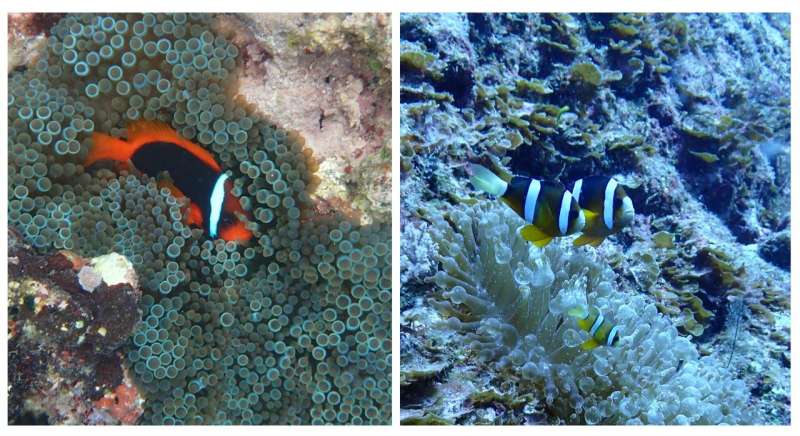
Anemonefish form mutualistic relationships with the sea anemones they live in and these associations are not random: some species such as the yellow-tail anemonefish (Amphiprion clarkii) are generalists and can live in almost any sea anemone, others like the tomato clownfish (Amphiprion frenatus) are specialists, living in only one sea anemone species, the bubble-tip sea anemone (Entacmaea quadricolor). Reasons for these preferences are unclear because we know very little about the genetic diversity of giant sea anemones.
Researchers at the Marine Eco-Evo-Devo Unit and Marine Genomics Unit at the Okinawa Institute of Science and Technology (OIST) and Academia Sinica in Taiwan have studied the evolutionary history of giant sea anemones in Japan.
Rio Kashimoto and others published their findings in the journal Current Biology. Their study provides a detailed analysis of the genetic diversity of the bubble-tip giant sea anemone (Entacmaea quadricolor) found in Japan.
The scientists discovered that anemonefish are better at distinguishing different populations of giant sea anemones than humans.
Through one or more sensory organs, these fish identify a particular species of giant sea anemone to make their home and avoid other species. Humans, on the other hand, need to obtain samples from sea anemones and do a thorough examination of their molecular data to identify individual sea anemone species. This is precisely what the scientists at OIST did to better understand the genetic variation among these soft-bodied marine invertebrates.
Giant sea anemones have evolved into three very different genera: Entacmaea (bubble-tip sea anemones), Stichodactyla (carpet sea anemones), and Heteractis (magnificent sea anemones). There are currently 10 known species of giant sea anemones worldwide and seven of these live in Okinawa.
The researchers collected pieces of tentacles from all seven species. In total, 55 samples were collected in Japan at study sites ranging from southern Okinawa to north of Tokyo.
-
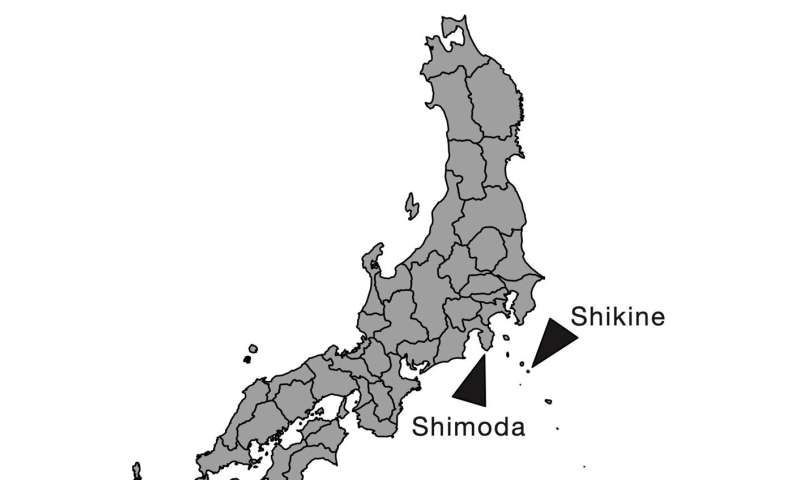
Map showing the locations of sea anemone sample collection sites in Japan. Credit: Kashimoto et al., 2023 -
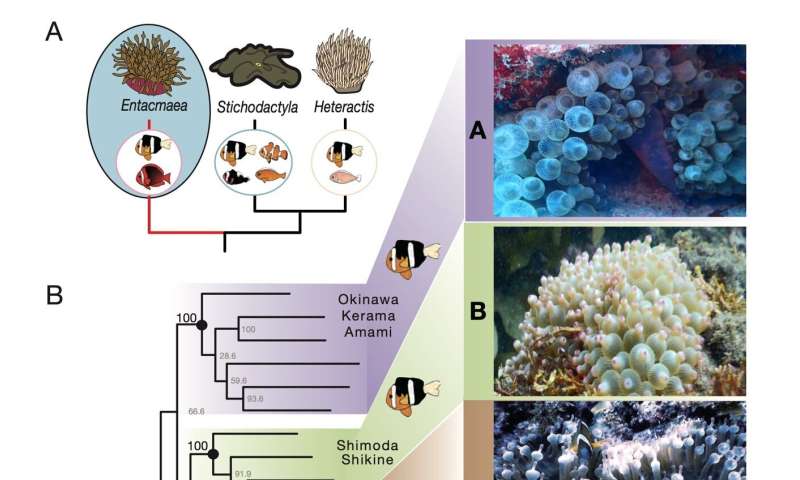
A schematic phylogenetic tree showing the main lineages of giant sea anemones (A) and the four groups of the Entacmaea lineage with their anemonefish associations (B). Credit: Kashimoto et al., 2023
All the genes in each sample were sequenced—a technique that enabled the researchers to determine the specific genetic information contained within RNA molecules. Using this information, they were able to construct a phylogenetic tree, a diagram showing the evolutionary relationships among species and how they evolved from a series of common ancestors.
The scientists discovered remarkable genetic variety within the bubble-tip sea anemone specimens, identifying four unique genetic lineages—a sequence of species considered to have evolved from its predecessor.
"Within the bubble-tip giant sea anemone species (Entacmaea) our phylogenetic tree reveals the presence of two main groups with a common ancestor in Okinawa. The first group consists of three categories of descendants, A, B, and C, which are associated with the yellow-tail anemonefish as the host species. The second group, category D, is associated with the tomato anemonefish as the host species," Rio Kashimoto, lead author of the paper, explained.
The researchers observed this association in the wild and wanted to know if the fish can also distinguish between the two sea anemone groups in captivity. They conducted a choice experiment using a large tank at the OIST Marine Science Station, putting one sea anemone from group A at one end of the tank and one from group D at the other end.
They placed either a yellow-tail or tomato juvenile anemonefish in the middle of the tank and recorded if the fish chose to stay in a sea anemone or not, and if it did, which sea anemone group the species chose.
The yellow-tail anemonefish always selected group A when they chose to stay in a sea anemone, but some fish did not select a sea anemone. Most tomato anemonefish chose the lineage D sea anemone, very few individuals chose lineage A, and some did not select a sea anemone.
-
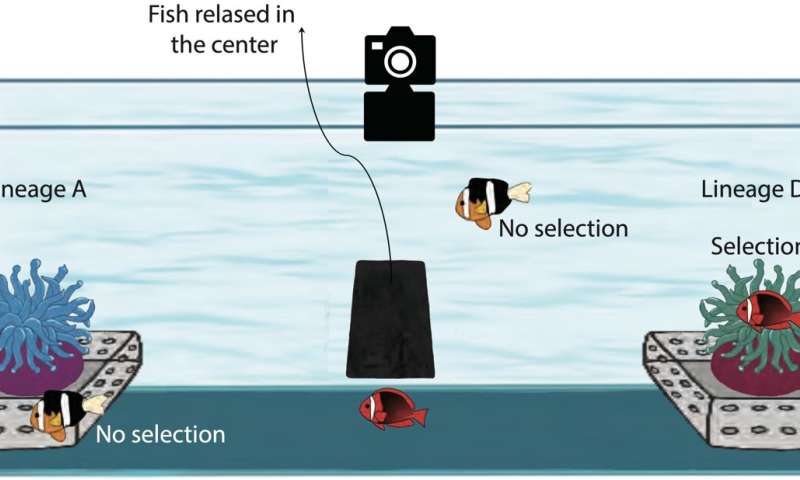
Schematic diagram showing the choice experiment for lineage A and D of the bubble-tip sea anemone (Entacmaea) in yellow-tail and tomato clownfish. Credit: Kashimoto et al., 2023 -
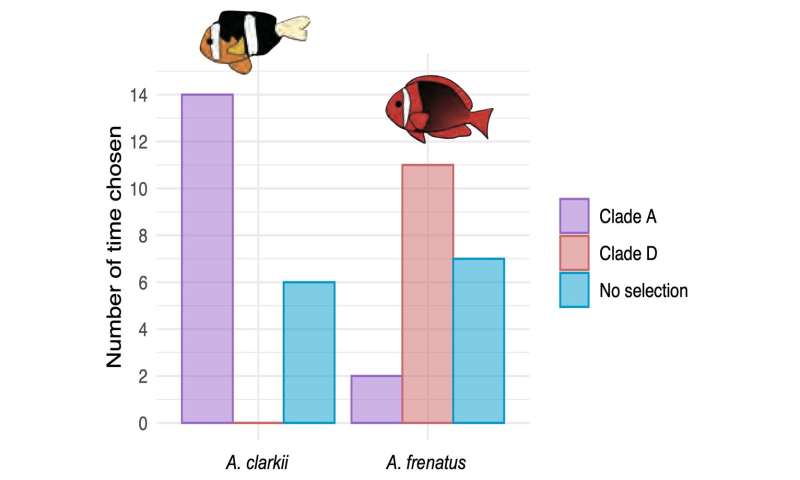
Histogram showing the results of the choice experiments for lineage A and D of the bubble-tip sea anemone (Entacmaea) by yellow-tail and tomato clownfish. Credit: Kashimoto et al., 2023
"In lab experiments we observed that in most cases each anemonefish species can recognize the sea anemone lineage it is associated with in the wild, despite the fact the clades look the same. We also observed that these lineages do not express the same genes, especially genes for toxicity and color—sea anemones use venom for prey capture, digestion and defense, and they probably do not have the same odor, which may be a key part in how anemonefish recognize different lineages," Prof. Laudet, leader of the Marine Eco-Evo-Devo Unit, stated.
"Therefore, anemonefish are able to identify distinct lineages of sea anemones that we humans can't distinguish. We believe that these two main groups represent two cryptic species—species that we cannot identify by looking at them, but they are genetically distinct."
This discovery means that the bubble-tip sea anemone could in fact be two different species hiding in plain sight, and that Okinawa and Japan are home to more marine biological diversity than previously thought.
More information: Anemonefish are better taxonomists than humans, Current Biology (2024). DOI: 10.1016/j.cub.2023.07.051. www.cell.com/current-biology/f … 0960-9822(23)00990-9
Journal information: Current Biology
Provided by Okinawa Institute of Science and Technology




















